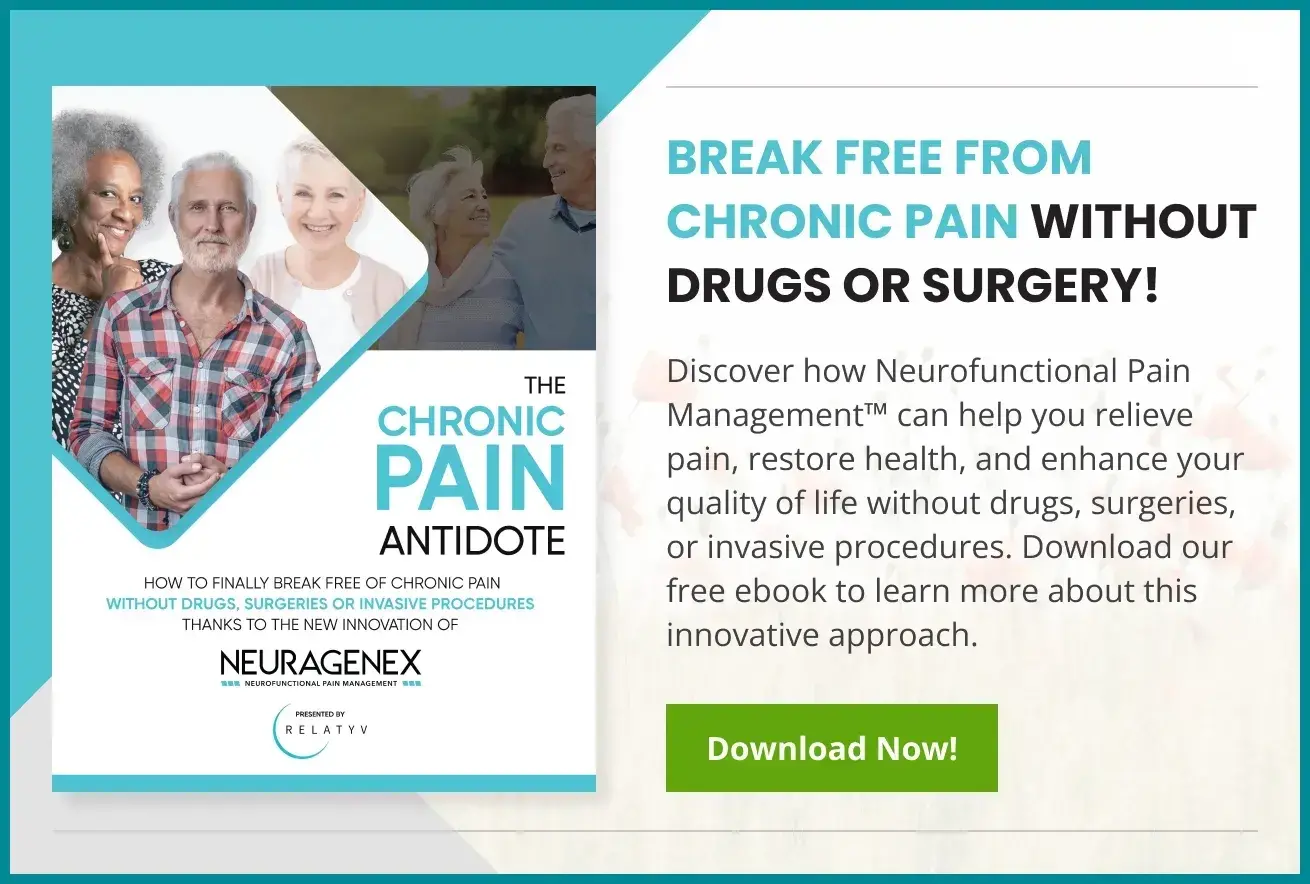Endometriosis

Addressing Endometriosis Pain With Intercourse
Read More
July 6, 2023
Endometriosis is a condition in which the tissue or lining of the uterus grows outside of it. It usually occurs in other organs, such as the ovaries, fallopian tubes, intestines, and bladder. It can cause pelvic pain, discomfort during sex, and infertility. There’s no cure for endometriosis, but it can be managed in several ways to prevent it from getting worse and preserve your quality of life.
Although endometriosis is very common — affecting up to 10 percent of reproductive-age women — it can go undiagnosed for many years. However, getting an accurate diagnosis of endometriosis is the first step in managing the condition.
There are a few key signs and symptoms that should warrant further investigation for endometriosis. These can range from subtle to chronic and can include:
Recognizing the early signs and symptoms of endometriosis is essential, as the condition can often go undetected for many years. Getting diagnosed and treated early is crucial to help prevent the condition from worsening, reduce pain and discomfort, and lessen the risk of infertility.
If you suspect you may have endometriosis, speaking with your doctor is essential. Your doctor can help assess whether or not the symptoms you are experiencing could be signs of endometriosis and refer you to a specialist if necessary. Depending on your needs, a gynecologist or an infertility specialist can provide the best treatment approach for your condition.
And also, since the signs and symptoms of endometriosis can be similar to those of other conditions, it is important to get a proper diagnosis. Your doctor may use any combination of the following tests to diagnose endometriosis:
Most doctors will ask for a detailed medical history and then evaluate your symptoms. This is important to rule out other possible causes of pelvic pain or infertility. For example, certain pre-existing conditions or medications you’re taking can cause symptoms similar to endometriosis.
Imaging tests can help to visually identify lesions or other signs of endometriosis. Some of the common imaging tests used to help diagnose endometriosis include:
The most reliable way to diagnose endometriosis is with a laparoscopy. This surgical procedure involves a process in which a small incision is made in your abdomen and a thin, lighted tube is inserted to view your pelvic organs. This allows the doctor to look for signs of endometriosis, such as cysts or lesions. It can also be used to take samples of tissue for further testing.
In addition to the tests listed above, your doctor may also use laboratory testing and biomarkers to understand your symptoms better and diagnose endometriosis. These tests can include:
Unfortunately, endometriosis is often misdiagnosed or overlooked. This can be due to various factors, such as the fact that many of the symptoms are similar to other conditions. Some of the conditions that endometriosis is often mistaken for include:
If you are diagnosed with endometriosis, there are a few things that you can do to help manage your pain and other symptoms. These include the following:
Following a diet tailored to the needs of people living with endometriosis can be beneficial in reducing your symptoms. This diet typically focuses on anti-inflammatory foods like fruits, vegetables, whole grains, fish, nuts, and seeds. Additionally, eating a fiber-rich diet can help reduce bloating and improve digestion.
You should avoid processed and sugary foods, as well as caffeine and alcohol. Doing so can also help reduce inflammation. Reducing inflammation is essential to addressing endometriosis-related pain because it helps to reduce the size of endometrial lesions.
Stress can affect your endometriosis symptoms and can make them worse. Stress will increase cortisol production. Cortisol is a hormone that can worsen inflammation and increase endometriosis-related pain. As such, it’s vital to take steps to manage stress. This may include making time for relaxation and self-care activities, such as yoga, meditation, and journaling.
Exercising regularly can help reduce pain and improve your overall health. Exercise helps reduce inflammation, increase flexibility, and strengthen the pelvic floor muscles. Good exercises for endometriosis include walking, swimming, and gentle yoga. Regular exercise has also been linked to reduced stress levels, which can also help manage endometriosis-related pain.
Endometriosis can be difficult to cope with, and it’s important to remember that you don’t have to go through it alone. Talking to family and friends, as well as finding a support group for people with endometriosis, can help you better cope with your condition. Your doctor can also provide advice and support, so don’t hesitate to ask for help.
Staying well-hydrated is also beneficial in managing endometriosis-related pain. Drinking plenty of water can help reduce cramping and bloating, which are common symptoms of endometriosis. Additionally, hydration can help to reduce inflammation, which is essential in managing pain. Stick to drinking water and avoiding sugary drinks, which can exacerbate your symptoms.
Simply taking a warm bath or using a heating pad can help to relax tense muscles and reduce cramping. The heat helps to improve blood flow, which can help to reduce pain. It also helps to relax the muscles of the pelvic floor, which is essential in reducing endometriosis-related pain. Additionally, a warm bath can be an excellent way to relax and relieve stress, which can also help manage your symptoms.
Here at Relatyv, we use a Nuerofunctional Pain Management approach to treating chronic conditions such as endometriosis. This means we focus on treating the whole person, not just their physical symptoms. We use a combination of therapies to help reduce pain and address the underlying causes of endometriosis-related pain. These are all non-invasive, drug-free treatment solutions that include the following:
Electroanalgesia is an FDA-cleared therapy solution that helps block pain signals to the brain, stimulates the release of endorphins, and reduces inflammation by improving circulation. This therapy is quick and easy, with no downtime or side effects. It works by stimulating the nerves and muscles in the affected area with electrical pulses.
Although a form of electrical stimulation, it differs from other similar therapies, such as TENS (transcutaneous electrical nerve stimulation), in that it uses a much higher pulse rate. Whereas TENS units typically only deliver electrical currents at a rate of 250 to 400 pulses per second, electroanalgesia delivers pulses at up to 10,000 pulses per second. This higher pulse rate allows the currents to penetrate much further, providing more effective, long-term pain relief.
Our Relatyv protocol also includes IV therapy for the treatment of chronic pain. This type of therapy involves the administration of nutrients and vitamins via intravenous (IV) drip. This helps improve the body’s natural healing process and can have a profound effect on chronic pain, inflammation, and other symptoms.
IV therapy is particularly effective for endometriosis since the condition often leads to inflammation of the tissues in the pelvic area. Certain nutrients, such as magnesium, vitamin C, and omega-3 fatty acids, can help address the inflammation associated with endometriosis as well.
We also offer lifestyle counseling as part of our whole-person treatment approach. This means we work with each patient to develop a comprehensive plan tailored to their individual needs. This plan includes advice on nutrition, physical activity, stress management, and lifestyle changes that can help reduce endometriosis-related pain.
Endometriosis is a complex condition that can be difficult to diagnose and manage. Early awareness and diagnosis are key in treating endometriosis effectively. Although there is no cure, the symptoms can be managed with lifestyle changes and medical intervention. As such, if you’re experiencing any of the symptoms related to endometriosis, you must get an accurate diagnosis so that you can take steps to maintain your quality of life.
About the Author
Will is a healthcare executive, innovator, entrepreneur, inventor, and writer with a wide range of experience in the medical field. Will has multiple degrees in a wide range of subjects that give depth to his capability as an entrepreneur and capacity to operate as an innovative healthcare executive.
Share on Social Media




You can see how this popup was set up in our step-by-step guide: https://wppopupmaker.com/guides/auto-opening-announcement-popups/
You can see how this popup was set up in our step-by-step guide: https://wppopupmaker.com/guides/auto-opening-announcement-popups/
Neurofunctional Pain Management Overview
Symptoms
Conditions Treated
Treatments
Articles by Category
Locations
Colorado
Wisconsin
Georgia
Hiram
Lawrenceville
Marietta
Powder Springs
Texas
Waco
Victoria
Illinois
Buffalo Grove
New Lenox
St. Charles
Arizona
Tucson
Waddell
Arlington
Avondale
Buckeye
Superior
Mesa
Palo Verde
Morristown
Tempe
Chandler
Anthem
Eloy
Florence
Fort McDowell
Phoenix
El Mirage
Coolidge
Gilbert
Arizona City
Casa Grande
Casa Blanca
Aguila
Sacaton
Apache Junction
Kearny
Stanfield
Goodyear
Litchfield Park
Alabama
Arkansas
California
Florida
Idaho
Indiana
Iowa
Kansas
Louisiana
Maryland
Michigan
Rhode Island
Minnesota
Mississippi
Nevada
New Jersey
New Mexico
North Carolina
Ohio
Pennsylvania
South Dakota
Tennessee
Utah
Virginia
Washington

